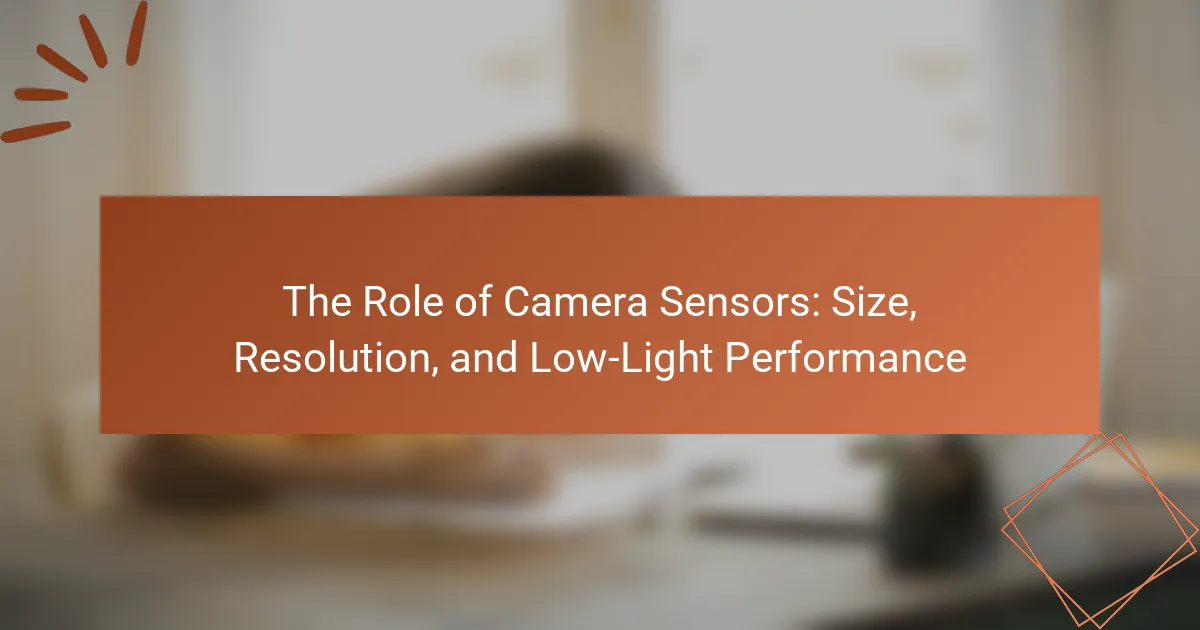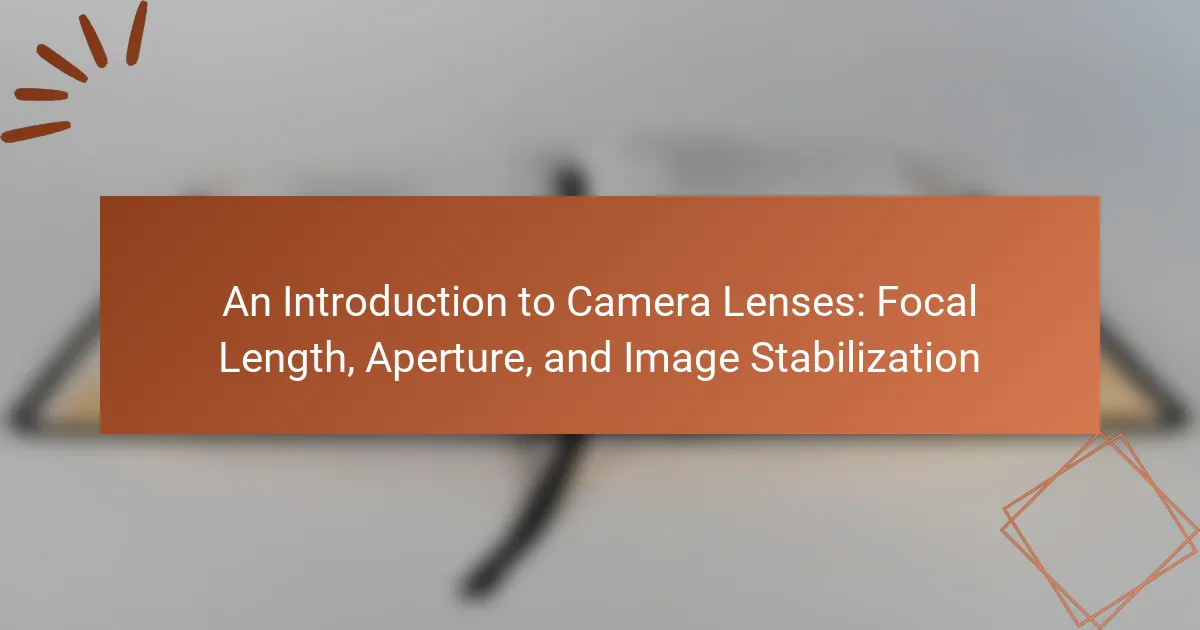Mirrorless cameras are compact digital cameras that lack a mirror mechanism, making them smaller and lighter than traditional DSLR cameras. This article outlines the key benefits of mirrorless cameras, including their portability, faster autofocus capabilities through on-sensor phase detection, and real-time exposure previews via electronic viewfinders. Additionally, it highlights their advanced video features, such as high-quality 4K recording with various frame rates. These attributes contribute to their growing popularity among both photographers and videographers, making them a compelling choice for visual content creation.

What are the benefits of mirrorless cameras?
Mirrorless cameras offer several benefits. They are generally smaller and lighter than traditional DSLRs. This reduction in weight makes them easier to carry for extended periods. Mirrorless cameras also provide faster autofocus capabilities. Many models utilize on-sensor phase detection for quicker focusing. Additionally, they allow for real-time exposure previews through electronic viewfinders. This feature helps photographers see the effects of adjustments instantly. Furthermore, mirrorless cameras often support advanced video features. They can record high-quality 4K video with various frame rates. These advantages make mirrorless cameras appealing to both photographers and videographers.
How do mirrorless cameras compare to traditional DSLRs?
Mirrorless cameras are generally lighter and more compact than traditional DSLRs. This is due to the absence of a mirror mechanism and optical viewfinder. As a result, mirrorless cameras can be more portable, making them ideal for travel.
In terms of image quality, both mirrorless cameras and DSLRs can produce high-resolution images. However, mirrorless models often utilize advanced sensor technology. This can lead to improved low-light performance and faster autofocus capabilities.
Furthermore, mirrorless cameras typically offer real-time exposure previews through electronic viewfinders. This feature allows photographers to see how settings affect the image before capturing it.
In contrast, DSLRs rely on optical viewfinders, which do not provide this real-time feedback. The difference in autofocus systems can also be significant. Mirrorless cameras use on-sensor phase detection, while DSLRs often utilize separate phase detection sensors.
Overall, mirrorless cameras offer advantages in weight, size, and technology that can enhance the shooting experience compared to traditional DSLRs.
What are the key differences in weight between mirrorless and DSLR cameras?
Mirrorless cameras are generally lighter than DSLR cameras. This weight difference is primarily due to the absence of a mirror mechanism in mirrorless designs. DSLRs contain a mirror and prism system, which adds significant weight. On average, mirrorless cameras can weigh 20-30% less than their DSLR counterparts. For example, a typical DSLR can weigh around 800 grams, while a mirrorless camera might weigh approximately 600 grams. This weight advantage makes mirrorless cameras more portable and easier to handle for extended periods. The trend towards lighter materials in mirrorless designs further contributes to their reduced weight.
How does the size of mirrorless cameras enhance portability?
The size of mirrorless cameras enhances portability by making them lighter and more compact than traditional DSLRs. This reduced size allows for easier handling and transportation. Mirrorless cameras typically lack a bulky mirror mechanism, contributing to their slim profile. Many models weigh significantly less, often around 300-500 grams. This lightweight design is beneficial for travel and street photography. Users can carry them comfortably for extended periods. Additionally, smaller lenses are available, further reducing the overall weight. This combination of size and weight makes mirrorless cameras ideal for on-the-go photography.
Why is image quality important in photography?
Image quality is crucial in photography because it directly impacts the clarity and detail of the captured images. High image quality allows for better color accuracy and sharpness, which enhances the overall visual appeal. It enables photographers to produce prints that maintain detail even at larger sizes. Additionally, superior image quality aids in post-processing flexibility. Photographers can adjust exposure, contrast, and colors without degrading the image. Studies show that images with higher resolution are more engaging to viewers. In competitive fields like advertising and fine art, image quality can significantly influence marketability and consumer perception.
What factors contribute to the image quality of mirrorless cameras?
The image quality of mirrorless cameras is influenced by several key factors. Sensor size plays a crucial role; larger sensors capture more light, resulting in better image detail and lower noise. Lens quality also affects image sharpness and color accuracy. The type of lens used can enhance or degrade the final image. Dynamic range is another important factor; it determines how well a camera can capture details in both bright and dark areas.
Additionally, image processing capabilities are vital. Advanced algorithms improve color reproduction and noise reduction. The camera’s ISO performance impacts image clarity at various light levels. Finally, stabilization systems reduce motion blur, contributing to sharper images. Together, these factors define the overall image quality of mirrorless cameras.
How does sensor size impact image quality in mirrorless cameras?
Sensor size significantly impacts image quality in mirrorless cameras. Larger sensors capture more light, resulting in better dynamic range and lower noise levels. This leads to improved performance in low-light conditions. Additionally, larger sensors provide greater depth of field control. The size also affects the resolution, with larger sensors typically allowing for higher pixel counts. This results in sharper images with finer detail. Studies show that cameras with full-frame sensors outperform those with smaller sensors in various image quality metrics. For example, full-frame mirrorless cameras often exhibit superior color accuracy and tonal gradation compared to their APS-C counterparts.
What unique features do mirrorless cameras offer?
Mirrorless cameras offer unique features such as compact design and electronic viewfinders. Their lack of a mirror mechanism allows for smaller and lighter bodies. This design results in improved portability for photographers. Additionally, electronic viewfinders provide real-time exposure previews. This feature enables accurate framing and exposure adjustments before capturing images. Many mirrorless cameras also support faster continuous shooting speeds. This capability is beneficial for capturing fast-moving subjects. Furthermore, they often have advanced autofocus systems with numerous focus points. This allows for precise focusing on subjects in various conditions.
How does electronic viewfinder technology improve user experience?
Electronic viewfinder technology enhances user experience by providing real-time previews of images. This allows photographers to see how adjustments affect exposure, color, and depth of field instantly. The electronic viewfinder displays a digital representation of the scene, which can include helpful overlays like histograms and focus peaking. This feature aids in achieving precise focus and exposure settings. Additionally, electronic viewfinders function well in low-light conditions, offering visibility where optical viewfinders may struggle. Studies show that users find electronic viewfinders more intuitive and informative, improving their overall shooting confidence.
What are the advantages of faster autofocus in mirrorless cameras?
Faster autofocus in mirrorless cameras enhances shooting efficiency and accuracy. It allows photographers to capture fast-moving subjects with precision. This feature is especially beneficial in sports and wildlife photography. Faster autofocus systems can lock onto subjects more quickly than traditional systems. Mirrorless cameras often utilize phase-detection and contrast-detection methods for improved focus speeds. Studies show that some mirrorless models achieve focus in as little as 0.02 seconds. This speed reduces the chance of missing critical moments. Additionally, faster autofocus improves overall user experience by minimizing waiting times.
How do mirrorless cameras cater to different photography styles?
Mirrorless cameras cater to different photography styles through their versatile design and features. They offer interchangeable lenses, allowing photographers to select the best lens for their style. For portrait photography, fast prime lenses are available. For landscape photography, wide-angle lenses can be used. Their compact size enhances portability, making them ideal for travel and street photography.
Mirrorless cameras also provide advanced autofocus systems, which benefit action and wildlife photography. Many models have customizable settings and controls, accommodating various shooting preferences. Additionally, electronic viewfinders offer real-time exposure previews, aiding in creative shooting styles.
These features collectively make mirrorless cameras adaptable for different photography genres.
What types of photography benefit most from mirrorless technology?
Mirrorless technology benefits types of photography that require fast autofocus and compact gear. This includes street photography, where quick reactions are crucial. Landscape photography also benefits due to the lightweight nature of mirrorless cameras. Wildlife photography gains from silent shooting capabilities, minimizing disturbance. Additionally, event photography thrives on the advanced electronic viewfinders that mirrorless systems offer. These advantages stem from the lack of a mirror mechanism, allowing for quicker shutter speeds and better low-light performance. Thus, mirrorless cameras are particularly suited for dynamic and mobile photography environments.
How can mirrorless cameras enhance the experience for travel photographers?
Mirrorless cameras enhance the experience for travel photographers by offering lightweight designs and high image quality. Their compact size makes them easy to carry during long travels. This portability encourages photographers to capture more spontaneous moments. Additionally, mirrorless systems provide fast autofocus, improving the chances of getting sharp images. They often include electronic viewfinders, allowing real-time exposure adjustments. Many mirrorless cameras also support interchangeable lenses, offering versatility for different shooting conditions. The high-resolution sensors in these cameras deliver excellent detail and color accuracy. This combination of features leads to a more enjoyable and productive photography experience while traveling.
What should you consider when choosing a mirrorless camera?
When choosing a mirrorless camera, consider sensor size, autofocus performance, and lens compatibility. Sensor size affects image quality and low-light performance. Larger sensors, like full-frame, typically provide better image quality than smaller sensors. Autofocus performance is crucial for capturing sharp images, especially in action photography. Fast and accurate autofocus systems enhance the shooting experience. Lens compatibility is important for accessing a variety of focal lengths and styles. Ensure the camera supports the lenses you plan to use. Battery life is another factor; mirrorless cameras often have shorter battery life than DSLRs. Check reviews for real-world performance insights. Finally, ergonomics and user interface can impact usability, so handle the camera before purchasing.
What are the essential specifications to look for in a mirrorless camera?
Essential specifications to look for in a mirrorless camera include sensor size, autofocus system, and video capabilities. Sensor size affects image quality and low-light performance. Larger sensors, like full-frame, capture more light and detail. The autofocus system is crucial for capturing sharp images, especially in fast-moving scenes. Look for features such as phase detection and contrast detection for better focus accuracy. Video capabilities matter for filmmakers; check for 4K recording and frame rate options. Additionally, consider battery life and lens compatibility. A longer battery life ensures more shooting time. Lens compatibility affects versatility, so ensure the camera supports a wide range of lenses. These specifications collectively enhance the overall performance and usability of a mirrorless camera.
How do brand and model influence the performance of mirrorless cameras?
Brand and model significantly influence the performance of mirrorless cameras. Different brands utilize varying sensor technologies, affecting image quality and low-light performance. For instance, Sony’s Exmor sensors are known for their high dynamic range. Model variations within a brand can also lead to differences in autofocus speed and accuracy. Higher-end models often feature advanced processing engines, enhancing overall performance. Additionally, lens compatibility varies by brand and model, impacting versatility and image sharpness. For example, Canon’s RF lenses are optimized for their mirrorless systems, improving autofocus and image quality. Therefore, both brand and model choices are crucial for achieving desired photographic outcomes.
What are some tips for maximizing the benefits of mirrorless cameras?
To maximize the benefits of mirrorless cameras, utilize their lightweight design for portability. This allows for easier travel and spontaneous shooting opportunities. Leverage the electronic viewfinder for accurate exposure and focus previews. This feature enhances composition and reduces the need for post-editing adjustments. Take advantage of interchangeable lenses to adapt to various shooting scenarios. This flexibility can improve image quality and creative expression. Use in-body stabilization to reduce motion blur, particularly in low-light conditions. This technology enhances sharpness and clarity in your photos. Lastly, regularly update the camera’s firmware to access new features and improvements. This ensures optimal performance and functionality.
How can you effectively use mirrorless cameras for different shooting conditions?
To effectively use mirrorless cameras for different shooting conditions, adjust settings based on the environment. In low light, increase ISO to enhance sensitivity without excessive noise. Utilize fast lenses with wide apertures to allow more light. For bright conditions, lower ISO and use neutral density filters to manage exposure. Adjust shutter speed to freeze motion or create blur, depending on the desired effect. In dynamic situations, use continuous autofocus to track moving subjects effectively. Mirrorless cameras offer real-time exposure previews, aiding in quick adjustments. Their compact size allows for easy mobility in various settings. These features make mirrorless cameras versatile for diverse shooting scenarios.
What maintenance practices can prolong the life of your mirrorless camera?
Regular cleaning of the mirrorless camera is essential for prolonging its life. Use a microfiber cloth to gently wipe the lens and body. Avoid using harsh chemicals that could damage the camera’s finish. Additionally, protect the camera from extreme temperatures and humidity. Store the camera in a dry, cool place when not in use. Regularly check and update firmware to ensure optimal performance. Lastly, handle the camera with care to prevent physical damage. These practices can enhance the longevity and reliability of your mirrorless camera.
The primary entity of this article is mirrorless cameras, which are highlighted for their advantages in weight, size, and image quality. The article explains that mirrorless cameras are generally smaller and lighter than traditional DSLRs, making them more portable and easier to handle. It discusses key benefits such as faster autofocus capabilities, real-time exposure previews through electronic viewfinders, and advanced video features. Additionally, the article covers how sensor size and lens quality impact image quality, and it provides insights into selecting the right mirrorless camera based on performance specifications and shooting conditions.



